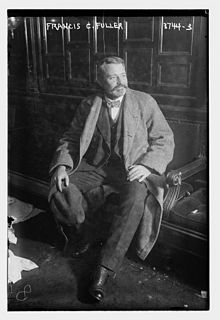부트리프틸린
Butriptyline | |
| 임상 데이터 | |
|---|---|
| 상호 | 에바딘, 기타 |
| 기타 이름 | AY-62014[1] |
| 루트 행정부. | 오랄 |
| ATC 코드 | |
| 법적 상태 | |
| 법적 상태 |
|
| 약동학 데이터 | |
| 바이오 어베이러빌리티 | 무슨 일입니까?[2] |
| 단백질 결합 | 90 %[2] 이상 |
| 대사 | 간(N-탈메틸화) |
| 대사물 | 노르부트리프틸린[2] |
| 반감기 제거 | 20시간[2] |
| 식별자 | |
| |
| CAS 번호 |
|
| PubChem CID | |
| 드러그뱅크 | |
| 켐스파이더 | |
| 유니 |
|
| 케그 | |
| 체비 | |
| 첸블 | |
| CompTox 대시보드 (EPA ) | |
| 화학 및 물리 데이터 | |
| 공식 | C21H27N |
| 몰 질량 | 293.454 g/120−1 |
| 3D 모델(JSmol) | |
| 키라리티 | 라세미 혼합물 |
| |
| |
| | |
Evadyne라는 브랜드명으로 판매되는 Butriptyline은 영국과 몇몇 유럽 국가에서 우울증 치료를 위해 사용되고 있지만 더 이상 [1][3][4][5][6]시판되지 않는 것으로 보이는 삼환식 항우울제이다.트리미프라민, 이프린돌, 아목사핀과 함께 비교적 늦게 도입되고 약리학적으로 [7][8]비정형 또는 2세대 TCA로 기술되어 왔다.그것은 다른 TCA에 비해 거의 사용되지 않았고, 처방전의 수는 수천 [9]개에 불과했다.
의료 용도
부트리프틸린은 [10]우울증 치료에 사용되었다.보통 하루에 [11]150~300mg의 용량으로 사용되었습니다.
부작용
부트리프틸린은 아미트리프틸린과 밀접한 관계가 있어 다른 TCA와 유사한 효과를 보이지만 진정제 등의 부작용은 심각도가 낮아지고 [5][6][9]다른 약물과의 상호작용 위험도 낮아진다.
부트리프틸린은 강력한 항히스타민 효과가 있어 진정과 졸음을 유발한다.[12]그것은 또한 강력한 항콜린제 [13]효과를 가지고 있으며, 이로 인해 구강 건조, 변비, 소변 유지, 흐릿한 시력, 인지/[12]기억 장애와 같은 부작용을 초래합니다.이 약물은 알파-1 차단제로서 상대적으로 효과가 약하고 노르에피네프린 재흡수 [14][15]억제제로서 효과가 없으므로 항아드레날린 [14][13][additional citation(s) needed]및 아드레날린 부작용과 관련이 거의 없다.
과다 복용
약리학
약역학
| 위치 | Ki(nM) | 종. | 참조 |
|---|---|---|---|
| SERT | 1,360 4,300 10,000()IC50 | 인간 쥐. 쥐. | [15] [17] [18] |
| NET | 5,100 990 1,700 (IC50 ) | 인간 쥐. 쥐. | [15] [17] [18] |
| DAT | 3,940 2,800 5,200 (IC50 ) | 인간 쥐. 쥐. | [15] [17] [18] |
| 5-HT1A | 7,000 | 인간 | [19] |
| 5-HT2A | 380 | 인간 | [19] |
| 5-HT2C | ND | ND | ND |
| α1 | 570 | 인간 | [14] |
| α2 | 4,800 | 인간 | [14] |
| D2. | ND | ND | ND |
| H1 | 1.1 | 인간 | [14] |
| mACh | 35 | 인간 | [14] |
| 특별히 명기되어 있지 않는 한 값은 K(nMi)입니다.값이 작을수록 약물이 사이트에 강하게 결합됩니다. | |||
시험관내 부트리프틸린은 강력한 항히스타민제 및 항콜린제, 중간 정도의2 5-HT 및 α-아드레날린제1 수용체 길항제이며, 매우 약하거나 무시할 수 있는 모노아민 재흡입 [14][19][15][18]억제제이다.이러한 작용은 기분을 좋게 하는 [20][18][17]효과의 명백한 매개자로서 세로토닌 차단 효과를 가진 아이프린돌 및 트리미프라민과 유사한 프로파일을 제공하는 것으로 보인다.
그러나 소규모 임상시험에서 유사한 용량을 사용한 부트리프틸린은 항우울제로서 아미트리프틸린 및 이미프라민과 유사한 효과가 있는 것으로 밝혀졌다. 두 TCA는 모두 5-HT2 길항제 및 세로토닌-노레피네프린 재흡입 [14][19][21]억제제로서 훨씬 강함에도 불구하고 말이다.그 결과, 부트리프틸린은 다른 작용기구를 가지거나 다른 약리역학을 가진 대사물에 대한 체내 프로드러그로서 기능할 수 있다.
약동학
치료용 버터프틸린의 농도는 60~280 ng/mL(204~954 nmol/L)[22]이다.혈장 단백질 결합은 90% [2]이상이다.
화학
부트리프틸린은 삼환식 화합물, 특히 디벤조시클로헵타디엔으로 화학구조에서 [23]사이드 체인과 함께 융합된 3개의 고리를 가지고 있다.기타 디벤조시클로헵타디엔 TCA는 아미트리프틸린, 노르토리프틸린 및 프로트리프틸린을 [23]포함한다.부트리프틸린은 프로필리덴 측쇄 [9][24]대신 이소부틸 측쇄를 가진 아미트리프틸린의 유사체이다.그것은 옆사슬 탈메틸화 대사물 노르부트리프틸린이 2차 아민인 [25][26]제3차 아민 TCA이다.다른 3차 아민 TCA는 아미트리프틸린, 이미프라민, 클로미프라민,[27][28] 도슐레핀(도티에핀), 독세핀 및 트리미프라민을 포함한다.부트리프틸린의 화학식은 3-(10,11-dihydro-5H-dibenzo[a,d]시클로헵텐-5-yl)-N,N,2-트리메틸프로판-1-아민이며, 유리염기형은 CHN의2127 화학식을 분자량 293446g/[1]mol이다.그 약은 활성 염기와 [1][3]염산염으로 상업적으로 사용되어 왔다.프리베이스의 CAS 레지스트리 번호는 15686-37-0, 염산염은 5585-73-9입니다.[1][3]
역사
Butriptyline은 Wyeth에 의해 개발되어 1974년 또는 [4][29][30]1975년에 영국에서 도입되었습니다.
사회와 문화
일반명
Butriptyline은 약의 영어와 프랑스어 총칭이고, Butriptyline 염산염은 [1][3][10]약과 입니다.이것의 총칭은 라틴어로 butriptylinum, 독일어로 butriptylin,[3] 스페인어로 butriptylina입니다.
브랜드명
Butriptyline은 Evadene, Evadyne,[1][3][4] Evasidol, Centrolese라는 브랜드명으로 판매되고 있습니다.
유용성
Butriptyline은 영국, 벨기에, 룩셈부르크, 오스트리아 및 [3][4]이탈리아를 포함한 유럽에서 판매되고 있습니다.
레퍼런스
- ^ a b c d e f g J. Elks (14 November 2014). The Dictionary of Drugs: Chemical Data: Chemical Data, Structures and Bibliographies. Springer. pp. 201–. ISBN 978-1-4757-2085-3.
- ^ a b c d e Florencio Zaragoza Dörwald (4 February 2013). Lead Optimization for Medicinal Chemists: Pharmacokinetic Properties of Functional Groups and Organic Compounds. John Wiley & Sons. pp. 313–. ISBN 978-3-527-64565-7.
- ^ a b c d e f g Swiss Pharmaceutical Society (2000). Index Nominum 2000: International Drug Directory (Book with CD-ROM). Boca Raton: Medpharm Scientific Publishers. ISBN 3-88763-075-0.
- ^ a b c d William Andrew Publishing (22 October 2013). Pharmaceutical Manufacturing Encyclopedia. Elsevier. pp. 777–. ISBN 978-0-8155-1856-3.
- ^ a b Helmut Buschmann (16 April 2007). Antidepressants, Antipsychotics, Anxiolytics: From Chemistry and Pharmacology to Clinical Application. Wiley. pp. 180–. ISBN 978-3-527-31058-6.
- ^ a b Eugene S. Paykel (1992). Handbook of Affective Disorders. Guilford Press. pp. 339–. ISBN 978-0-89862-674-2.
- ^ Seth (18 November 2009). Textbook Of Pharmacology. Elsevier India. pp. 119–. ISBN 978-81-312-1158-8.
- ^ Bhattacharya (2003). Pharmacology, 2/e. Elsevier India. pp. 292–. ISBN 978-81-8147-009-6.
- ^ a b c J. K. Aronson (2009). Meyler's Side Effects of Psychiatric Drugs. Elsevier. pp. 7, 18, 31. ISBN 978-0-444-53266-4.
- ^ a b I.K. Morton; Judith M. Hall (6 December 2012). Concise Dictionary of Pharmacological Agents: Properties and Synonyms. Springer Science & Business Media. pp. 58–. ISBN 978-94-011-4439-1.
- ^ J. K. Wing; Lorna Wing (29 October 1982). Handbook of Psychiatry: Volume 3, Psychoses of Uncertain Aetiology. CUP Archive. pp. 167–. ISBN 978-0-521-28438-7.
- ^ a b Gillman PK (July 2007). "Tricyclic antidepressant pharmacology and therapeutic drug interactions updated". British Journal of Pharmacology. 151 (6): 737–48. doi:10.1038/sj.bjp.0707253. PMC 2014120. PMID 17471183.
- ^ a b Marco Mumenthaler; P. A. van Zwieten; Jean Marie Farcot (1990). Treatment of Chronic Pain: Possibilities, Limitations, and Long-term Follow-up. CRC Press. pp. 114–. ISBN 978-3-7186-5027-9.
- ^ a b c d e f g h Richelson E, Nelson A (1984). "Antagonism by antidepressants of neurotransmitter receptors of normal human brain in vitro". J. Pharmacol. Exp. Ther. 230 (1): 94–102. PMID 6086881.
- ^ a b c d e Tatsumi M, Groshan K, Blakely RD, Richelson E (1997). "Pharmacological profile of antidepressants and related compounds at human monoamine transporters". Eur. J. Pharmacol. 340 (2–3): 249–58. doi:10.1016/s0014-2999(97)01393-9. PMID 9537821.
- ^ Roth, BL; Driscol, J. "PDSP Ki Database". Psychoactive Drug Screening Program (PDSP). University of North Carolina at Chapel Hill and the United States National Institute of Mental Health. Retrieved 14 August 2017.
- ^ a b c d Richelson E, Pfenning M (September 1984). "Blockade by antidepressants and related compounds of biogenic amine uptake into rat brain synaptosomes: most antidepressants selectively block norepinephrine uptake". European Journal of Pharmacology. 104 (3–4): 277–86. doi:10.1016/0014-2999(84)90403-5. PMID 6499924.
- ^ a b c d e Randrup A, Braestrup C (August 1977). "Uptake inhibition of biogenic amines by newer antidepressant drugs: relevance to the dopamine hypothesis of depression". Psychopharmacology. 53 (3): 309–14. doi:10.1007/BF00492370. PMID 408861. S2CID 8183053.
- ^ a b c d Wander TJ, Nelson A, Okazaki H, Richelson E (1986). "Antagonism by antidepressants of serotonin S1 and S2 receptors of normal human brain in vitro". Eur. J. Pharmacol. 132 (2–3): 115–21. doi:10.1016/0014-2999(86)90596-0. PMID 3816971.
- ^ Jaramillo J, Greenberg R (February 1975). "Comparative pharmacological studies on butriptyline and some related standard tricyclic antidepressants". Canadian Journal of Physiology and Pharmacology. 53 (1): 104–12. doi:10.1139/y75-014. PMID 166748.
- ^ Yong Zhou (22 October 2013). Drugs in Psychiatric Practice. Elsevier. pp. 194–. ISBN 978-1-4831-9193-5.
- ^ Forensic Science Progress. Springer Science & Business Media. 6 December 2012. pp. 24–. ISBN 978-3-642-73058-0.
- ^ a b Michael S Ritsner (15 February 2013). Polypharmacy in Psychiatry Practice, Volume I: Multiple Medication Use Strategies. Springer Science & Business Media. pp. 270–271. ISBN 978-94-007-5805-6.
- ^ Thomas L. Lemke; David A. Williams (24 January 2012). Foye's Principles of Medicinal Chemistry. Lippincott Williams & Wilkins. pp. 604–. ISBN 978-1-60913-345-0.
- ^ Neal R. Cutler; John J. Sramek; Prem K. Narang (20 September 1994). Pharmacodynamics and Drug Development: Perspectives in Clinical Pharmacology. John Wiley & Sons. pp. 160–. ISBN 978-0-471-95052-3.
- ^ Pavel Anzenbacher; Ulrich M. Zanger (23 February 2012). Metabolism of Drugs and Other Xenobiotics. John Wiley & Sons. pp. 302–. ISBN 978-3-527-64632-6.
- ^ Patricia K. Anthony (2002). Pharmacology Secrets. Elsevier Health Sciences. pp. 39–. ISBN 1-56053-470-2.
- ^ Philip Cowen; Paul Harrison; Tom Burns (9 August 2012). Shorter Oxford Textbook of Psychiatry. OUP Oxford. pp. 532–. ISBN 978-0-19-162675-3.
- ^ K. Ghose (11 November 2013). Antidepressants for Elderly People. Springer. pp. 182–. ISBN 978-1-4899-3436-9.
- ^ Richard C. Dart (2004). Medical Toxicology. Lippincott Williams & Wilkins. pp. 836–. ISBN 978-0-7817-2845-4.


